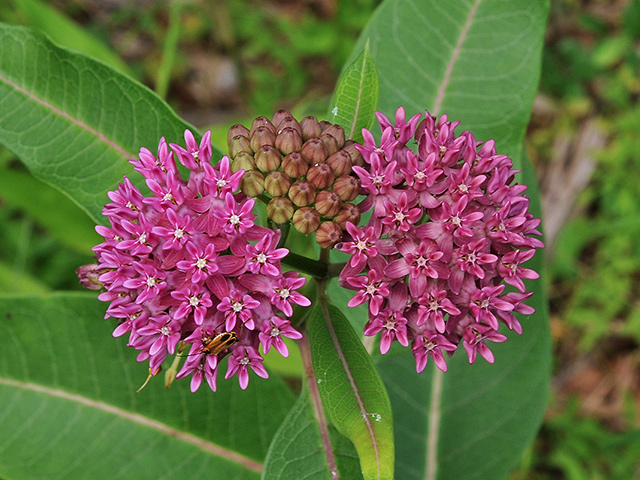Swamp Milkweed
Asclepias incarnata
Dogbane Family, Apocynaceae
The Asclepias Incarnata is a herbaceous, perennial plant which produces showy clusters of light pink to light purple upturned flowers during the months of June and July.
Native to the USA, it prefers to grow in damp to wet soils in full sun with partial shade, and can be found growing wild by swamps, marshes, bogs, ditches and streams, making it a useful plant for wetland rehabilitation. However, it will also thrive in average garden soil so long as it doesn't dry out completely, especially in the spring.
A robust and erect stemmed plant with long, narrow leaves, it can grow between 3 and 5 feet tall and exudes a milky juice when broken, hence its common name of Swamp Milkweed. It is very popular with pollinators, especially Monarch butterflies, Swallowtail butterflies, Hawk moths, bumble bees and other nectar seekers, and even an occasional Hummingbird. The Monarch butterfly only lays its eggs on milkweeds, and the leaves are the preferred food of the caterpillars of both the Monarch and Queen butterflies.
The name of Asclepias Incarnata comes from the Greek god of medicine and healing, Asklepios. Infusions of the roots and leaves from this plant have long been used for many medicinal purposes, including a cure for lung and digestion related ailments, rheumatism, parasite worms and as a heart tonic. The milky, white sap can also remove warts when applied to the skin. There is currently research being carried out on a chemical extracted from the seed which is being tested as a possible pesticide for nematodes.
Unfortunately, there is a decrease in native milkweed populations due to increasing urbanization and land development. This is a big concern for the Monarch butterflies which rely so much on this plant for their survival.
